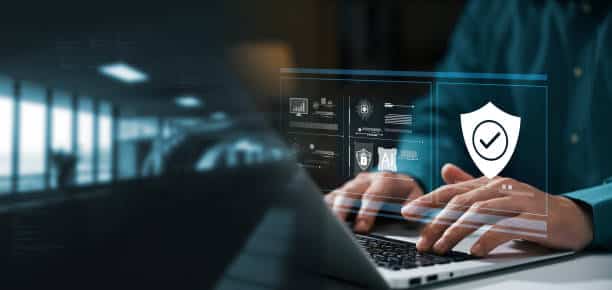Our Guidelines to Stay Safe and Secure Online

According to a previous study, the average person spends about 6 hours and 58 minutes per day connected to the internet. We spend time online to work, learn, and communicate with friends and family. Typically, the more time you spend online goes hand-in-hand with the number of accounts and devices. Have you thought about how this exposes you to a greater risk of cyberattacks due to your frequent online presence?
With that being said, it is vital to know how to protect yourself online.
Make sure to follow our guidelines below to stay safe and secure:
- Make sure you are using a secure internet connection: Using public WiFi can make you more vulnerable and visible to hackers. If you choose to connect, avoid completing online transactions and accessing online banking. If you’re concerned with using public WiFi, the use of a VPN (Virtual Private Network) is your best solution.
- Create strong passwords: Passwords are the most vital information you have when you're Avoid using your name, birthday, SSN, and other personal details. To create a strong password, use at least 12 characters with a mix of letters, numbers, and special characters.
- Keep your software and operating system up to date: Updating your software and operating system is advisable. Developers are constantly adding layers of security to protect users.
- Enable multi-factor authentication(MFA): Multi-factor authentication is an additional method to secure online transactions that add another way to verify yourself, usually seen as an email or message verification code that only you can access.
- Click before you click: Do not click suspicious/unknown attachments, links, or even website addresses.
- Make sure your devices are secure: Download antivirus software to your computer or mobile devices to protect you from viruses and other cyberattacks.
- Backup regularly: Whether you use software backup(cloud-based) or hardware backup (USB/hard drives) you are making it easy to revive or retrieve your data amid an attack.
- Be careful of your downloads: Cybercriminals use malware to attack unprotected devices. Be aware of what you are downloading and always verify that it comes from a secure and reputable website
Following these recommendations will help you mitigate your risk against the rising cyberattacks on both business and personal accounts. Phishing, malware, and ransomware are just some of the common cyberattacks to look out for. Paul Jackson, CEO and Cybersecurity Specialist of Jackson Technologies offers Cybersecurity Risk Assessments to businesses that want to learn more about their current cyber risks. We’ll look into your dark web breaches, open ports in your network, jeopardized passwords, employee security, and a whole lot more.
Learn about the underlying gaps that cybercriminals are waiting to exploit. Let’s start with a cyber strategy session where we’ll discuss your current security posture and our plan to move you into a secure future.
